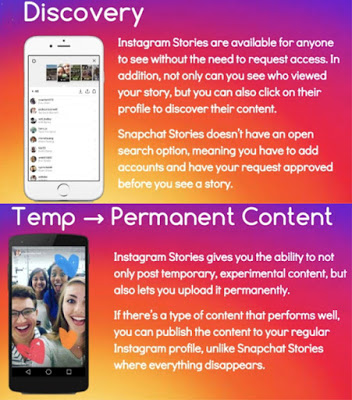Despite the fact that FDA recently cited Duchesnay for a violative Instagram Diclegis ad that featured celebrity Kim Kardashian (read “Kim Kardashian Instagram post draws FDA warning“), Instagram may be the social medium of choice of pharma marketers now that it has added a new feature.
Until now, I didn’t think Instagram was good for pharma. While its demographics (see charts below) may skew too young for marketing most of the products pharma has to sell, it is a growing population. Plus, now that Instagram is owned by Facebook, the demographics — especially among women (the best target for drug marketing) — will likely shift to resemble FB’s demographics.
 |
| Click on image for an enlarged view. |
According to eMarketer, now that Instagram is open to all advertisers, by the end of 2016, 48.8% of marketers are expected to use the platform (read “Instagram Set to Rock the Social Media Marketing World“).
Due to FDA regulations, the necessity to expend resources to monitor comments for adverse reactions (read “One (BIG) Reason Pharma Shouldn’t Reconsider Instagram“), lack of expertise in measuring social media ROI, etc., pharma marketers have not given social media a warm reception no matter what the platform. But the new Instagram feature I just learned about, may make it more appealing to pharma marketers. Continue reading to see why I feel this way.
The new feature I am talking about is Instagram “Stories,” which was launched on August 2, 2016 (see here).
Instagram’s Stories is somewhat similar to Snapchat’s. You can share multiple photos and videos to a specific story throughout the day, which are displayed in a slideshow format. You can add text, draw on them, and be creative with the content. The photos and videos usually disappear after 24 hours and won’t appear on your profile grid or in the feed. But the stories can also be permanent (see below). You can also easily hide your entire story from anyone you don’t want to see it, even if they follow you.
That last feature would be of interest to shady pharma marketers, like those hired by Duchesnay perhaps, who wish to post videos that violate FDA regulations and get away with it. But let’s assume there are few of those types of pharma marketers left standing after FDA sent that letter to Duchesnay.
There are other features of Instagram Stories that will appeal to ethical pharma marketers. The chart below, taken from this SlideShare presentation, summaries a few:
Lastly, but most importantly, there are no public comments to worry about. If anyone wants to comment on something they see in a story, they can send a private message using Instagram Direct.
Private messages could be a basis for better patient support by pharma or they can just be ignored and no one would be the wiser (except the people who sen the messages). This, of course, is a big deal for pharma due to the fears I mentioned at the start of this post.
I’m not sure, but perhaps messaging can be shut off altogether, which would be an added bonus for pharma companies that lack the necessary FTEs to handle comments (this has been cited by pharma as one reason for abandoning social media efforts. Read, for example, “Janssen to Shut Down Psoriasis 360 FaceBook Page“).
Patient stories are all the rage these days among pharma marketers (read, for example, “Patient Storytelling Marketing” and “Data gives credibility, storytelling provides truth in pharma“). Instagram Stories may just be the ideal social media platform for pharma to tell these stories.









![6 Digital Tools at the Center of Healthcare Digitalization [INFOGRAPHIC]](http://ec2-54-175-84-28.compute-1.amazonaws.com/pharma-mkting.com/wp-content/uploads/2021/04/6DigitalTools_600px-100x70.jpg)




